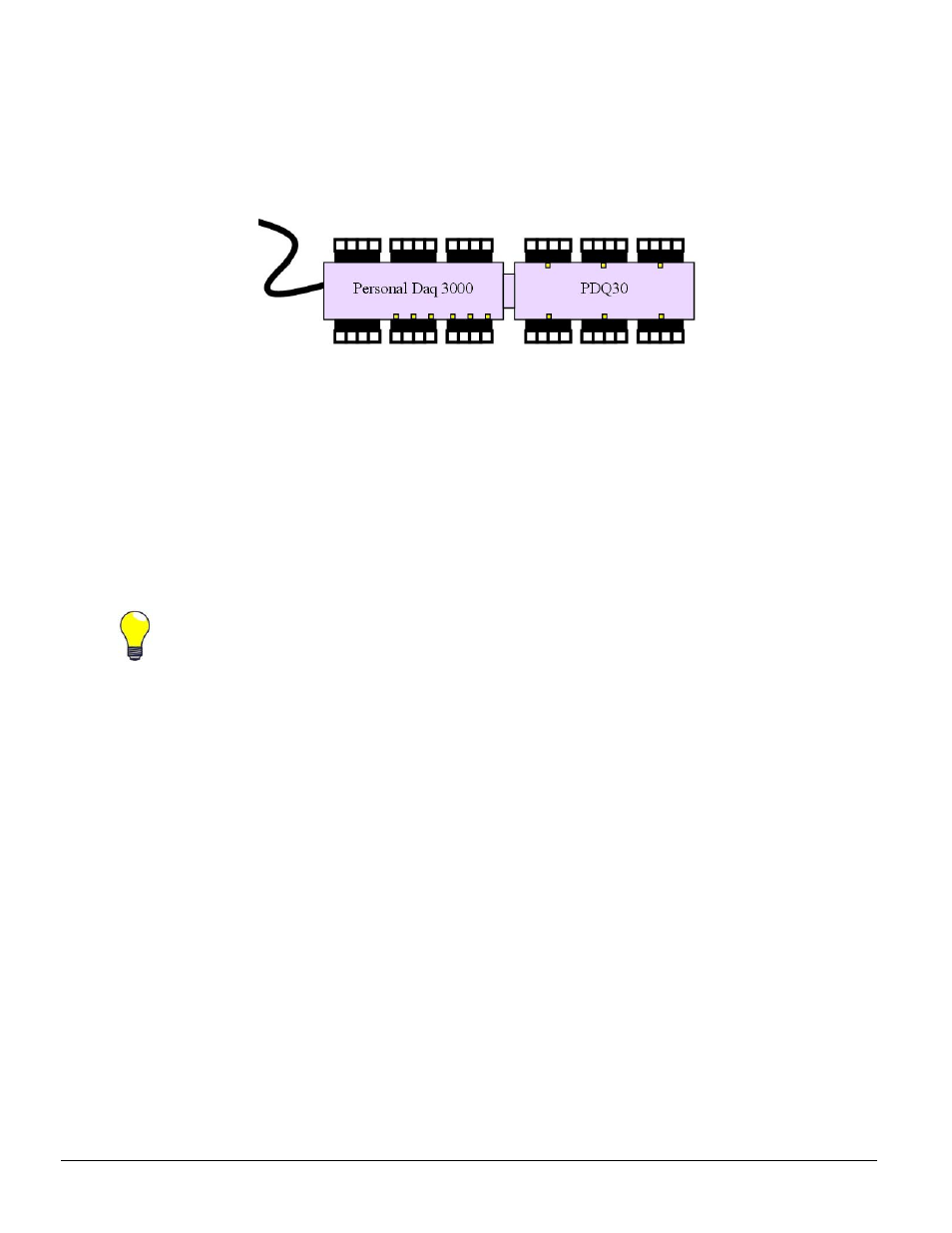Cold junction compensation techniques – Measurement Computing Personal Daq/3000 Series User Manual
Page 82

A-4 Signal Modes and System Noise
937492
Appendix A
Cold Junction Compensation Techniques
The Personal Daq/3000 can measure up to 8 channels of temperature; and the PDQ30 can measure up to 24
channels of temperature. Both units employ thermistors to measure the junction temperature (at the terminal
block) for each thermocouple connection. These thermistors are inside the unit, just behind the mating terminal
block connector on the internal circuit board. The actual junction is outside the unit and therefore there is some
amount of error in the thermistor’s ability to measure the actual junction temperature.
Since the Personal Daq/3000 generates more heat internally, there are more thermistors per terminal block than the
PDQ30. The PDQ30 generates little heat. There are three thermistors per terminal block on the Personal
Daq/3000 but only one thermistor per terminal block on the PDQ30.
Personal Daq software compensates for the thermal error between the CJC thermistor temperature and the actual
junction temperature at the terminal block. The units are profiled under controlled conditions (still air, 25C, 60
minute warm-up, lying on a flat surface) and the thermal error is measured on a per channel basis. This is done for
the Personal Daq/3000 and the PDQ30. The per-channel CJC temperature offsets are then stored inside the unit in
non-volatile memory, along with the calibration constants.
Tips for Making Accurate Temperature Measurements
o
Use as much oversampling as possible. (See section, Oversampling and Line Cycle Rejection
(page A-6 ).
o
Apply Line Cycle Noise Reduction (See section, Oversampling and Line Cycle Rejection
(page A-6 ).
o
Make sure the unit has been warmed up for at least 60 minutes, including the installed terminal blocks
and thermocouple wires. This allows the unit to thermally stabilize so the CJC thermistors can
accurately measure the junction at the terminal block.
o
Make sure the environment around the Personal Daq/3000 or PDQ30 is thermally stabilized and ideally
around 20C to 30C. If the Personal Daq’s ambient temperature is changing due to a local heating or
cooling source, then the TC junction temperature may be changing and the CJC thermistor will have a
larger error.
o
Use small diameter thermocouple wire that is “instrument grade.” Small diameter thermocouple wire
will have less effect on the thermocouple junction at the terminal block, less heat will be transferred
from the ambient environment to the junction.
o
Make sure the Personal Daq/3000 or PDQ30 is lying on a flat surface.
o
If the unit will have a sustained ambient operating environment outside of the 20C to 30C range,
consider autozero mode as a way to reduce the effects of offset drift. Performing a Y=MX+B
adjustment at a desired ambient temperature can also be done, make sure the unit has stabilized for at
least 60 minutes.
o
Be careful to avoid loading down the digital outputs or DAC outputs too heavily (>1 mA). Heavy load-
down will cause significant heat generation inside the unit and increase the CJC thermistor error.
